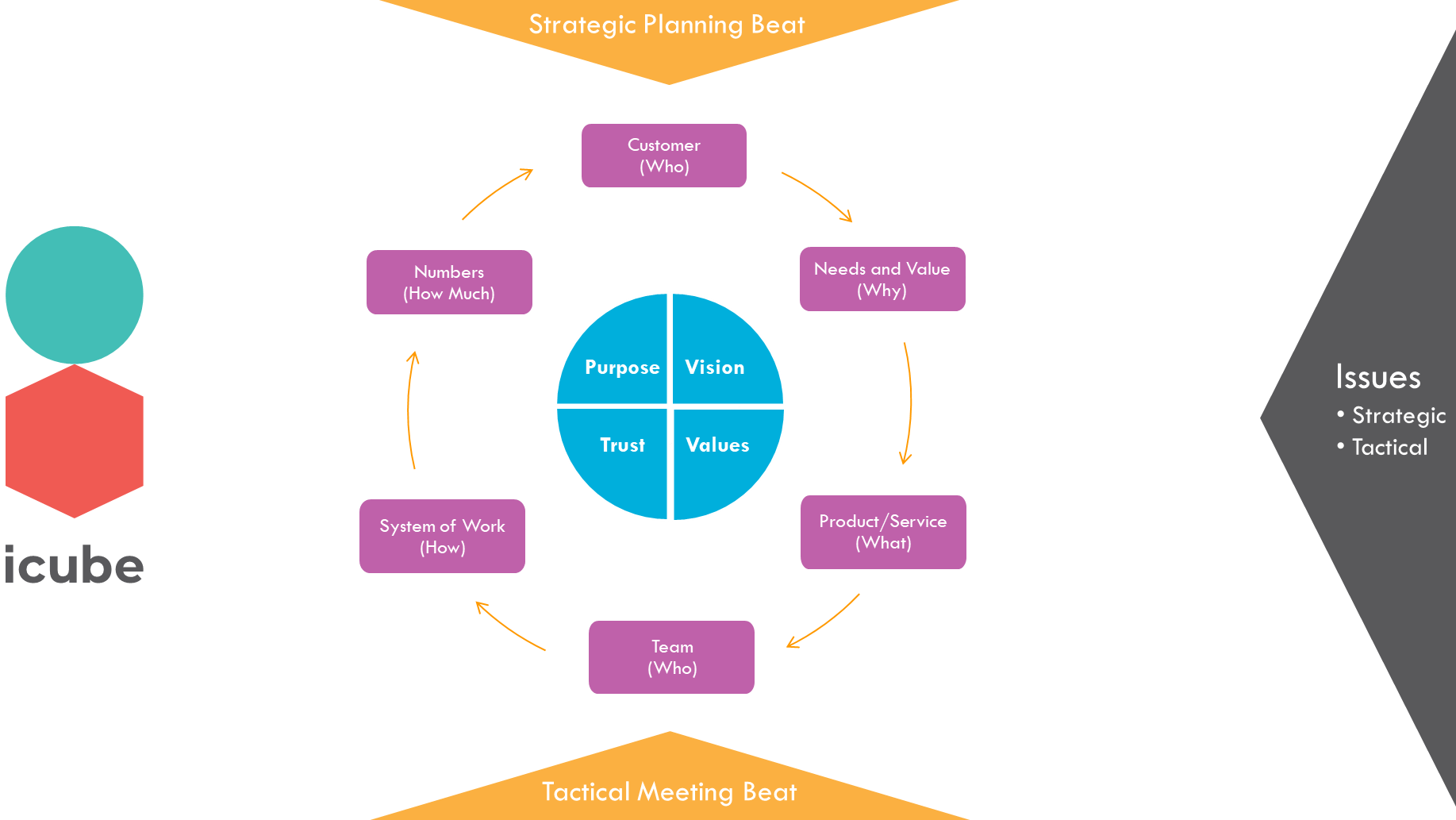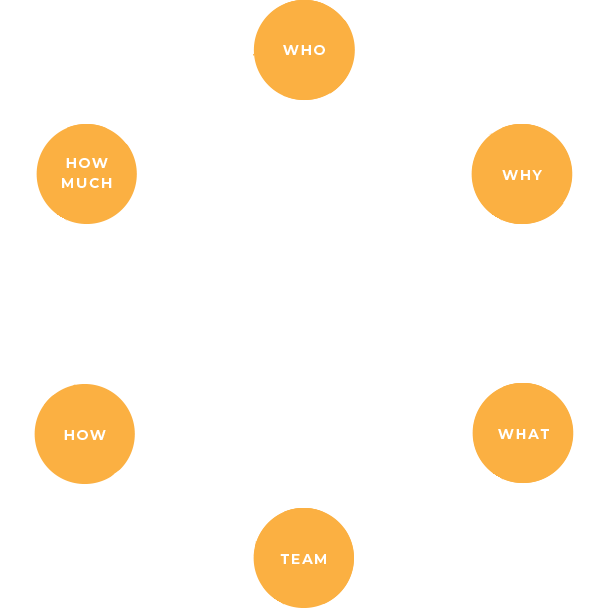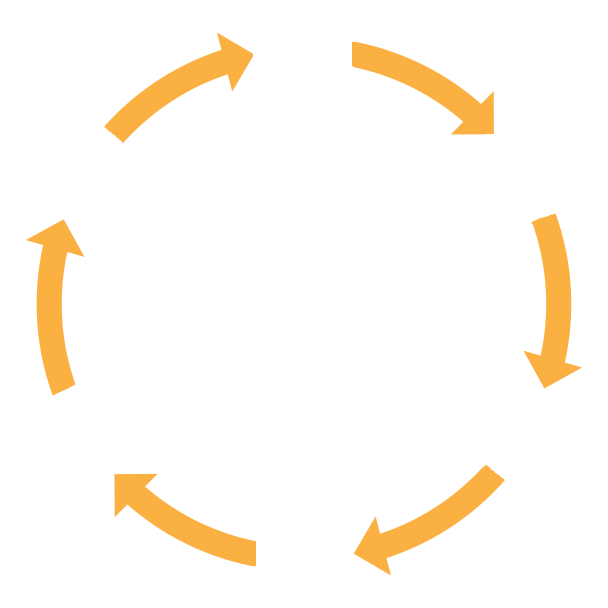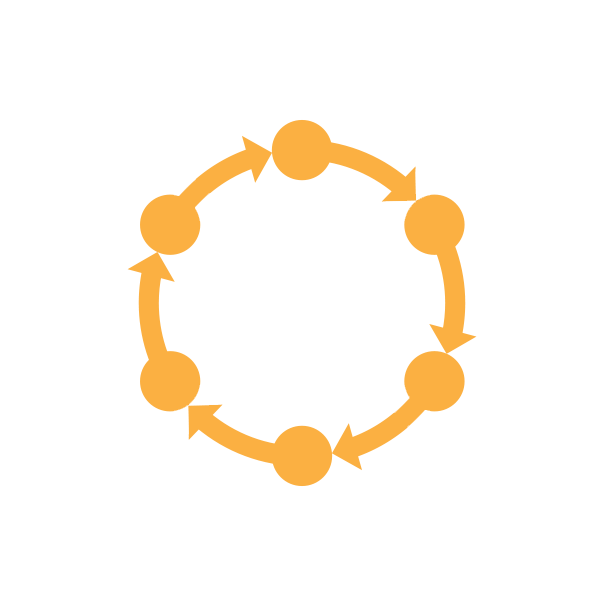


Successful companies are built on trust. Trust, an ownership mentality, and team member engagement are intertwined. When your people have an ownership mentality, they care and have high levels of engagement in their work. When others see their teammates displaying high levels of engagement, they trust them and in turn feel more engaged, which leads to a higher sense of ownership. This cycle of engagement, ownership, and trust is the foundation of effective organizations. High levels of productivity and profitability are expected outcomes of effective organizations.
icube™ is made up of three “i”s: Intensity (execution), Intelligence (strategy), and Inspiration (culture). Execution is the ability of an organization to get things done. The degree to which a team can execute well relies on the quality of their plan or strategy. An effective strategy can only be developed if there is a clearly identified core purpose and culture behind it. In other words, strategy (Intelligence) is inspired by culture (Inspiration), and execution (Intelligence) is enabled by strategy (Intelligence) and culture (Inspiration) is sustained by execution (Intensity). The three “i”s are inextricably linked together.

Inspiration is broken down into four foundational elements:
1.Purpose
2.Vision
3.Values
4.Trust
Inspiration begins with a clear purpose for the organization to exist. This is the central reason that drives all of the organization’s activities. This clear purpose then helps the team recognize the end-state when the purpose is realized. This is the vision that guides the activities of the team and what it should look like when the purpose is realized. The purpose and vision together help define the values or guiding principles that define how the team carries out its work. The values help create consistency in the actions and behaviors of team members.
Ultimately, purpose, vision, and values create trust, which is the binding glue of the organization. When there is a high level of trust, team members can count on their colleagues, and, in turn, be counted on by others. Cultures with high trust are capable of creating effective strategies or plans because these plans are driven by common purpose, vision, and values shared by all team members.



With a strong core of Inspiration, the organization can develop an effective Intelligence or strategy. In icube™, we define strategy with three external elements and three internal elements as follows:
External
Customer (Who)
Needs and Value (Why)
Product or Service (What)
Internal
Team (Who)
Systems of Work (How)
Numbers (How much)
Now let’s take a look at each of these, starting with the external elements of Intelligence.
The Three External Elements of Intelligence
The customers (Who) are the organization’s core constituents and define the focal point of the purpose and vision. To understand the customers, the team needs to identify their profiles, interests, demographics, and behaviors. The next element of strategy is to understand what the customers need and value (Why). This defines the value proposition of the organization. After understanding the value proposition, the organization has to develop products and services (What) that deliver the value proposition to the customers.
The Three Internal Elements of Intelligence
After defining the external elements of who, why, and what, we need a team (Who) to develop and deliver products and services to our customers using efficient systems (How) that can be measured (How much) and assessed. Every team needs systems of work comprised of efficient processes and tools in order to achieve consistently high-quality output. Then they need a defining a set of numbers (metrics) to measure the effectiveness of their systems. Now let’s look at Intensity.



When an organization defines its Inspiration and Intelligence clearly in this manner, the company is ready to realize its mission as guided by its purpose. When Inspiration and Intelligence are clear, Intensity, or execution, is largely a matter of getting things done. In the process of getting things done, the team will inevitably face obstacles or issues. However, the definition of Inspiration and Intelligence enable the obstacles or issues to become clear. They are either long-term, big-picture issues that are strategic in nature or short-term, specific issues that are tactical in nature.
Intensity is the ability to execute the systems of work consistently while being able to resolve issues. Tactical issues can be resolved in a weekly tactical meeting beat. Strategic issues, on the other hand, can be resolved in effective, regular quarterly and annual strategic planning beats. By articulating, developing, and strengthening its Inspiration, Intelligence, and Intensity, any organization can embark on the path of long-term sustainable growth. It is only when we put all the three “i”s together that we get the complete icube™ framework.
Leadership teams systematically integrate the three “i”s of icube™ into their daily practice as they learn to work with it. A trained facilitator guides the team through the icube™ steps with the following sessions and workshops:
This is the official kick-off of the icube™ process and the start of the team working in a fulfilling, productive environment. The team receives a set of tools on Intensity Day they can use for the rest of the journey and beyond.
Intensity Day begins with identifying the sources of complexity and an understanding of workflow and the metrics behind it. It also covers some elements of Intensity and Intelligence. For Intensity, the team learns how to conduct effective tactical meetings and how to manage strategic and tactical issues. For the internal elements of Intelligence, the team develops a functional framework and a system of work audit, which reveals bottlenecks in the organization, followed by a compilation of an initial set of numbers.
After Intensity Day, the team schedules regular weekly tactical meetings where it learns how to raise the accountability of team members to resolve issues and execute its quarterly wildly important goals (WIGs). This alone is such a significant change that even though we haven’t even arrived at the next station in our icube™ journey, team members feel a powerful shift in their experience.
After a few weeks of getting used to having tactical meetings that are engaging and result in a high level of accountability, the next stop in the journey is the Vision Building Workshop. The goal of this workshop is to conduct a, “Where are we?” situational review and use that to guide the team in answering some key questions as it defines the foundation of its Inspiration. When the team is done, it has a mission statement, a list of core values, and a long-term vision statement. In addition to these, the team also describes the three-year picture and any key quantifiable factors, a one-year picture, and a set of annual WIGs.
The Positioning and Branding Workshop usually follows the Vision Building Workshop on the same day to ensure continuity and ease of scheduling. The objective of this workshop is for the team to get a unified understanding of their customer. The team also agrees on the brand essence, the brand challenge, and how the organization wishes to represent itself in the world. The team can then hand over the deliverables of this workshop to the internal or external marketing team in order to define and execute strategy and tactics so they can attract the right type of customer, leading to authentic marketing and promotion.
Approximately ninety days after the first internal Intensity Day, the team reconvenes for the external part of Intensity, the Quarterly Strategic Review. Having completed all the other elements of icube™, this session takes a long-term view of the organization and tackles the strategic issues it is facing. In this session, the team reviews the elements of Inspiration, Intelligence, and Intensity, conducts a team health and trust review, and sets To Dos or WIGs for the following week or quarter.

After facilitating icube™ across companies of all shapes and sizes, we have found that the most critical predictor for ongoing success is effective meetings. Meetings are where human collaboration takes place. While well-run meetings are not the only factor necessary for maximizing profitable growth, they are most definitely required. Nowhere is this more apparent than in fast-moving, fast-growing companies in highly competitive industries with intricate information flows. Larger companies are more complex; therefore, it is even more critical to have a strong framework of effectiveness across the entire organization. Here are eight reasons why most meetings don’t engage us:
1.Unclear goals
2.Unclear agenda
3.Unclear or weak leadership and/or facilitation
4.Unclear expectations regarding participation or contributions from each individual
5.Dominance by one or more team member
6.Lack of accountability and follow-through
7.Poor time management
8.Technology distractions
Now that we know what makes meetings terrible, let’s examine what makes them great. It turns out that there are four stages to a successful meeting:
All meetings should open with a clear, shared understanding of the current status. Think of this as getting all participants on the same page before the meeting starts.
Next participants report on any tasks that they had promised to accomplish prior to the meeting in order to prepare for it. This stage is very important to ensure high levels of ownership and engagement.
Then the team takes on all the important items of the agenda one by one, solves problems, and makes decisions.
Finally, the team reviews all the follow-up work that needs to be done so that members go forth with clarity on each individual task as well as their completion dates. This develops the habit of getting things done, which is critical for execution.
All of icube™’s tactical and strategic meeting agendas are founded upon these four stages. When skilled facilitators help teams follow icube™’s agenda format, companies can expect meetings to start and end on time and skyrocket in terms of productivity and participation. Running effective meetings has a tremendous impact on morale, not to mention the bottom line.